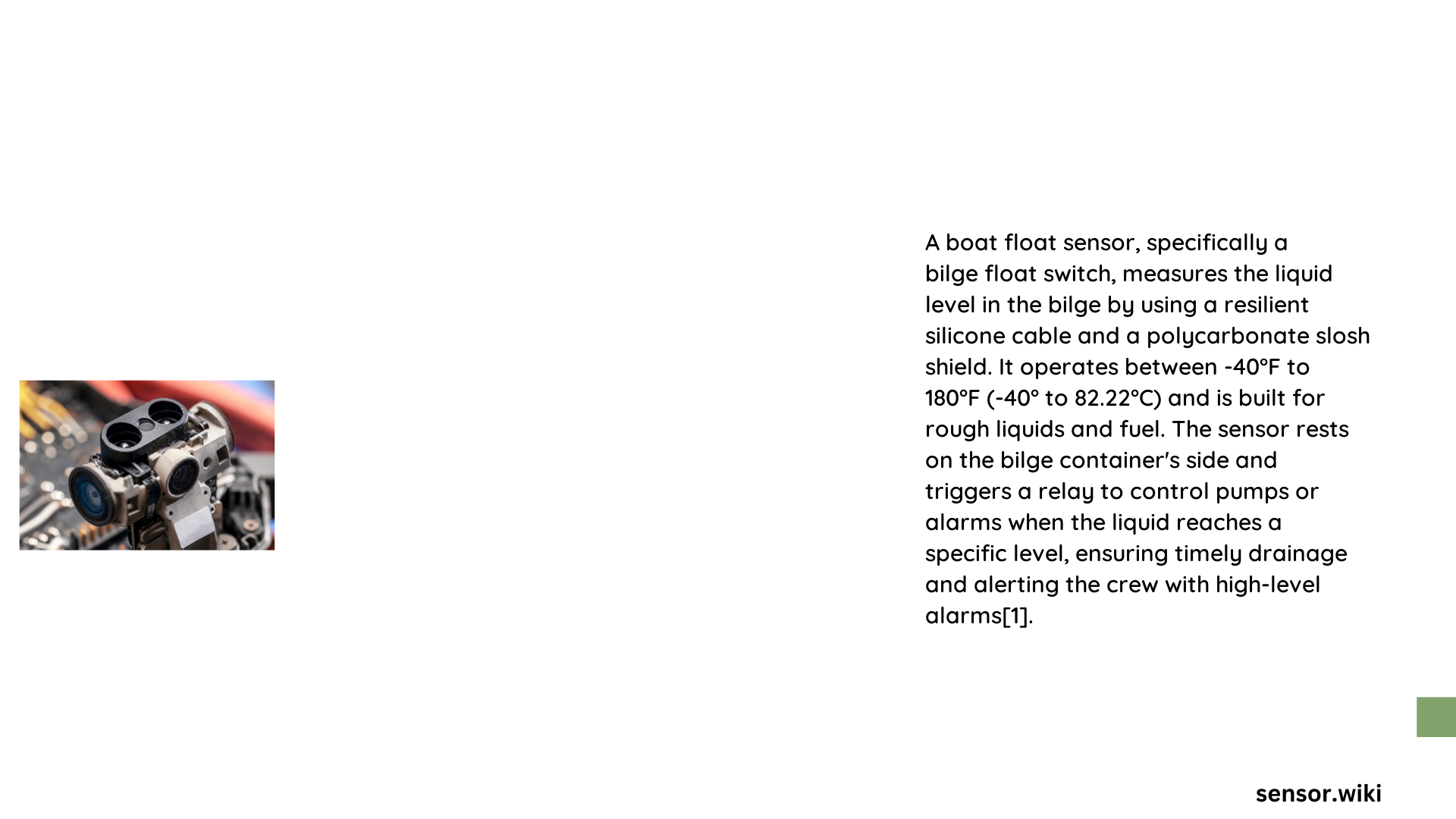Boat float sensors are sophisticated electronic devices designed to monitor and detect liquid levels in marine vessels, providing critical information about water, fuel, and other fluid compartments. These precision instruments utilize advanced float mechanisms to trigger electrical switches, enabling real-time tracking of liquid volumes across various marine applications. By converting physical float movements into electrical signals, these sensors offer boat operators essential data for safety, efficiency, and operational management.
What Are Boat Float Sensors?
Boat float sensors are specialized electronic components that detect liquid levels through mechanical displacement. When a liquid rises or falls, the sensor’s float moves vertically, activating electrical contacts that signal specific liquid level conditions.
Key Components of Boat Float Sensors
| Component | Function | Material Options |
|---|---|---|
| Float | Buoyancy mechanism | Stainless Steel, Polycarbonate, Buna-N Rubber |
| Switch | Electrical signal generator | SPDT (Single-Pole, Double-Throw) |
| Stem | Vertical guidance mechanism | Corrosion-resistant metals |
How Do Boat Float Sensors Work?

Boat float sensors operate through a simple yet effective mechanism:
- Liquid Level Change: As liquid rises or falls in a tank
- Float Movement: The buoyant float moves vertically
- Switch Activation: Electrical contacts open or close
- Signal Transmission: Electrical signal sent to monitoring system
What Are the Primary Applications?
Boat float sensors serve multiple critical functions:
- Fuel Tank Monitoring
- Bilge Water Detection
- Waste Water Level Tracking
- Potable Water Management
- Engine Coolant Level Verification
What Technical Specifications Matter?
Performance Characteristics
- Temperature Range: -20°F to 212°F
- Pressure Tolerance: Up to 150 psig
- Electrical Rating: Typically 24V DC
- Switch Type: SPDT (Single-Pole, Double-Throw)
How to Install Boat Float Sensors?
Installation Checklist
- Select appropriate sensor for specific liquid type
- Verify mounting location and orientation
- Ensure proper electrical connections
- Test switch functionality before final installation
- Confirm temperature and pressure compatibility
What Maintenance Strategies Enhance Longevity?
Recommended Maintenance Practices
- Quarterly visual inspections
- Clean float and stem surfaces
- Check electrical connections
- Verify switch responsiveness
- Replace worn components proactively
What Challenges Might Operators Encounter?
Common Troubleshooting Scenarios
- Float Sticking: Clean debris, check mechanical movement
- Electrical Failures: Test continuity, inspect wiring
- Corrosion: Use appropriate material selections
- Calibration Drift: Periodic recalibration recommended
What Future Innovations Exist?
Emerging boat float sensor technologies include:
- Wireless transmission capabilities
- Enhanced material durability
- Integrated diagnostic features
- Miniaturization of components
- Improved chemical resistance
Conclusion
Boat float sensors represent a critical technology in marine liquid level monitoring, offering precise, reliable performance across diverse operational environments.
